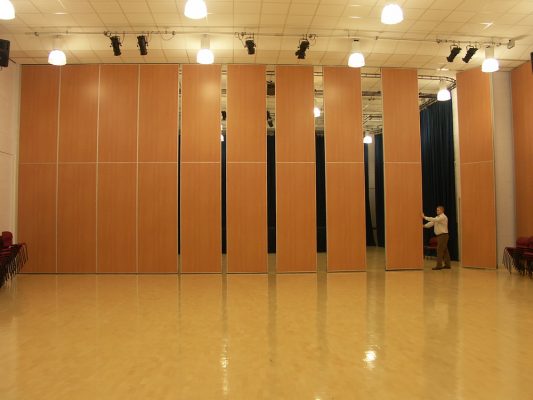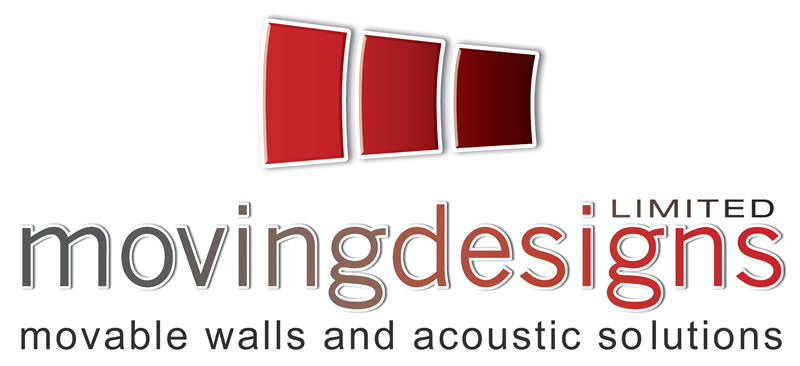 Movable Walls are crafted to provide a high degree of sound isolation between adjacent rooms. Since even small leaks will undermine the acoustical performance of the partitions, it is important to use “sound practices” every time that each wall is “set up.”
Movable Walls are crafted to provide a high degree of sound isolation between adjacent rooms. Since even small leaks will undermine the acoustical performance of the partitions, it is important to use “sound practices” every time that each wall is “set up.”
Below is a summary of key practices.
Whilst the wall is stacked away, hold both vertical edges of the first panel and manoeuvre out of the stack area ensuring that the panels are upright as not to damage the floor or ceiling.
Move the panel along the head track to the furthest point and insert the male profile into the female profile of the jamb mounted on the wall surface (opposite to the stacking area). This is done by pushing with one hand against the side of the panel at head height. If necessary use your foot to keep panel in place at the bottom (ensure hands are away from all meeting panel edges). Now insert the operating handle into the operating slot and turn the handle clockwise until full pressure is obtained. Now the panel is in its fixed position and the next panel can be brought out from the stacking area once again leading with the male profile. Ensuring that the top seal engages the track soffit and the bottom seal engages the floor surface.
Repeat the process and install each panel as above carefully aligning the panels. Take care that the panels NEVER collide harshly as this can cause costly profile damage. If you have an inset pass door the door must be closed when moving the panel. Lock the pass door if necessary.
The last panel is the so-called telescopic panel. One side of the panel comprises a telescopic sleeve which closes and seals the panel over the wall jamb. When the panel is in place insert the operating handle into the facia mounted slot) and wind out the mechanism to firstly force the telescopic seal outwards and then in turn the vertical pressure seals.
To re-stack the partition repeat the steps in reverse order rotating the winding handle in an anticlockwise direction
A good way to check for sound leaks is to check for light leaks. After an operable wall has been set up completely, turn on the lights in a room on one side of the operable wall, turn off the lights in the room on the other side of the operable wall and, standing in the darkened room, look for light leaks. If you see light leaks, then reset the affected panels for a tighter fit.
At the time that the operable walls were installed, the trolley suspension bolts on each panel were adjusted so that the panel was hanging vertically plumb. Over time, due to live loading and differential settling of the building, the operable wall tracks may move causing panels to hang slightly out of plumb and may possibly require readjustment of the panels.
If you experience any of these issues please contact us to discuss your options further.
